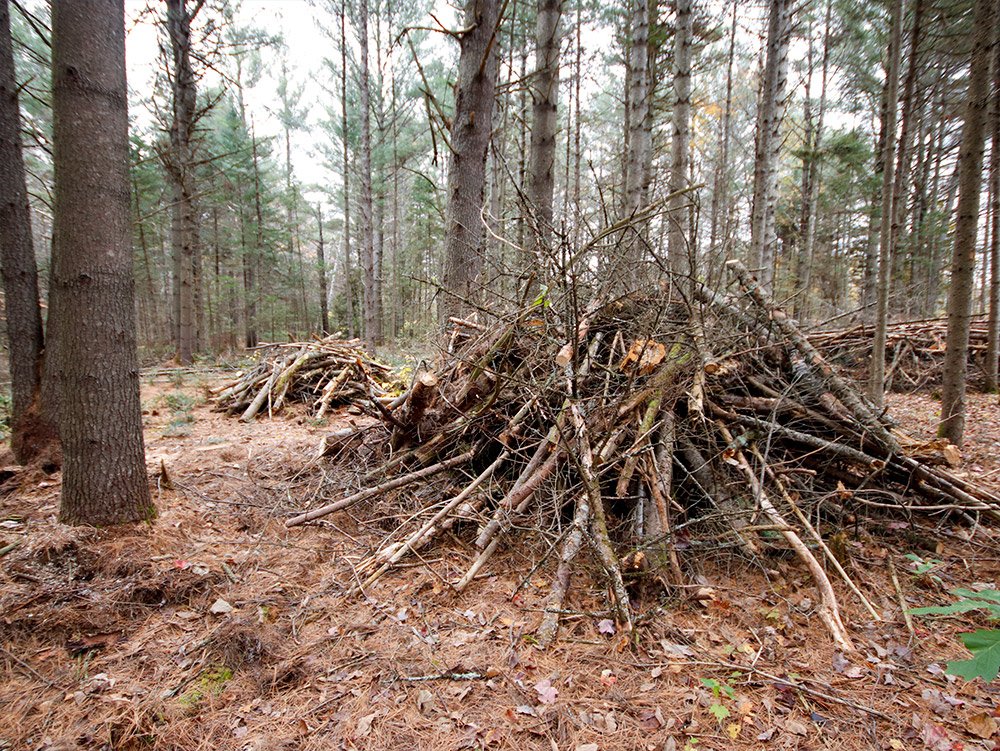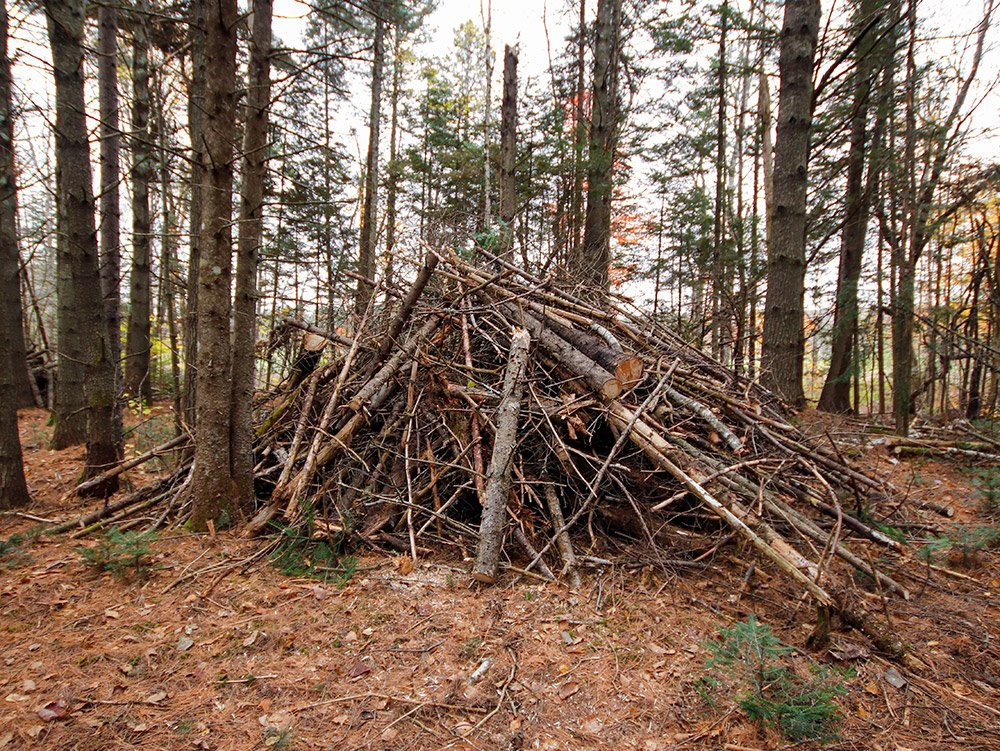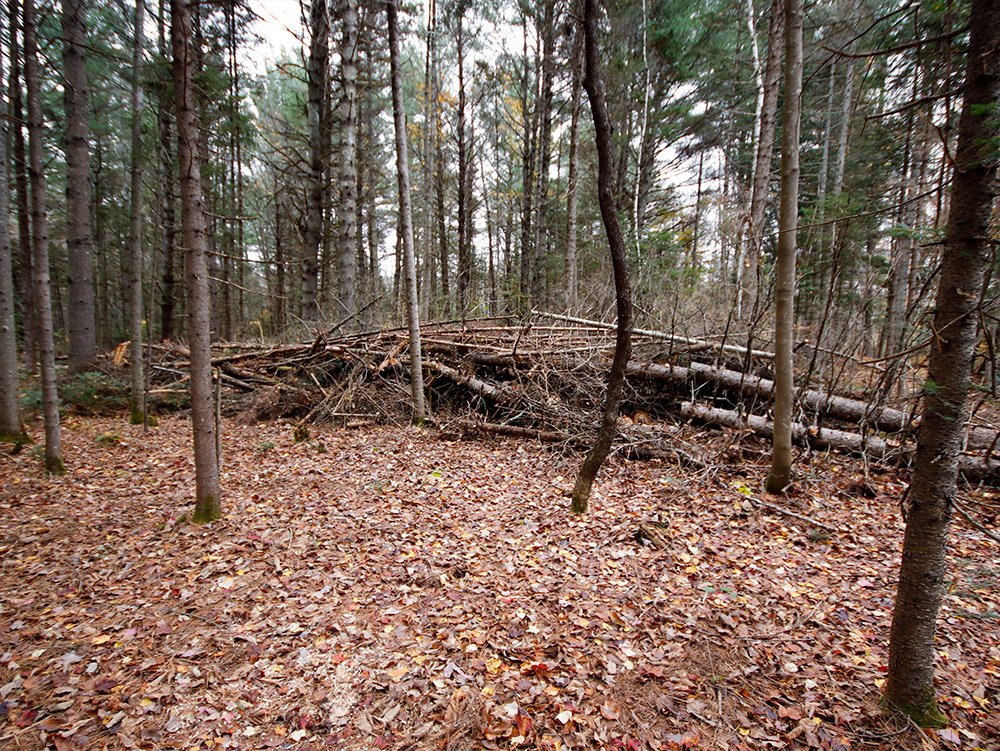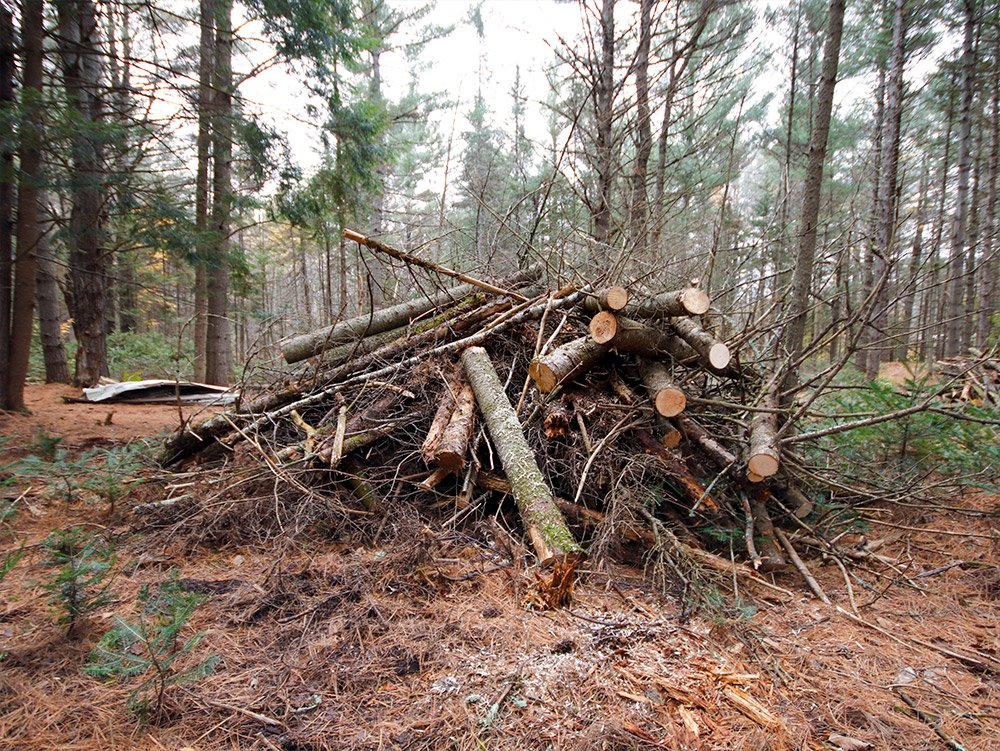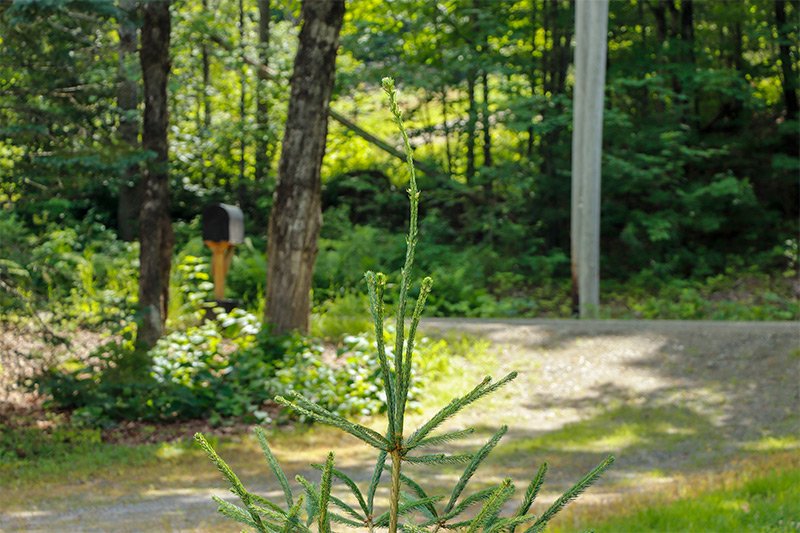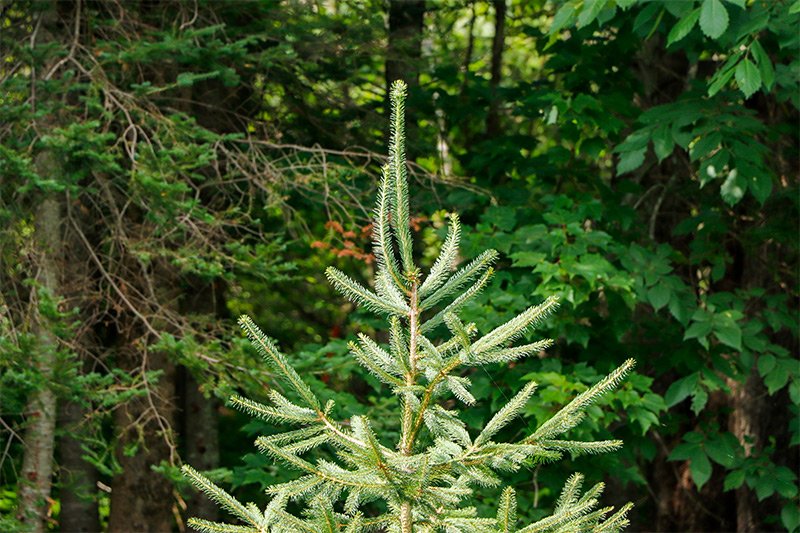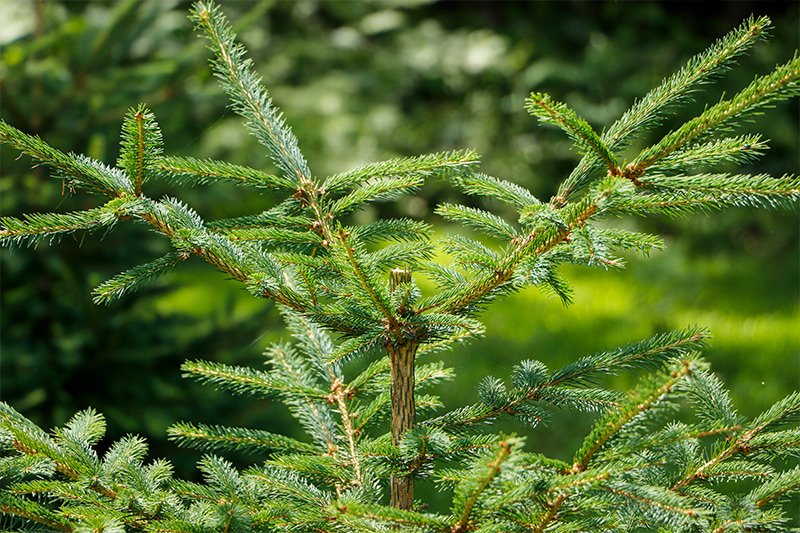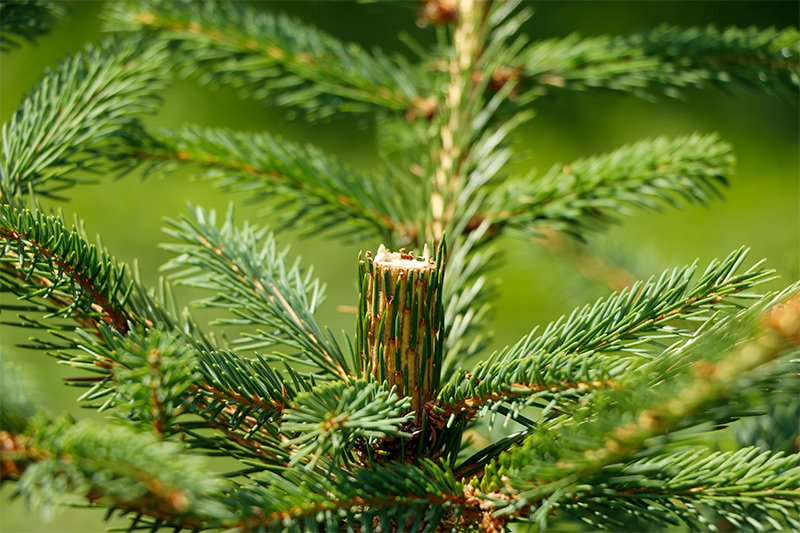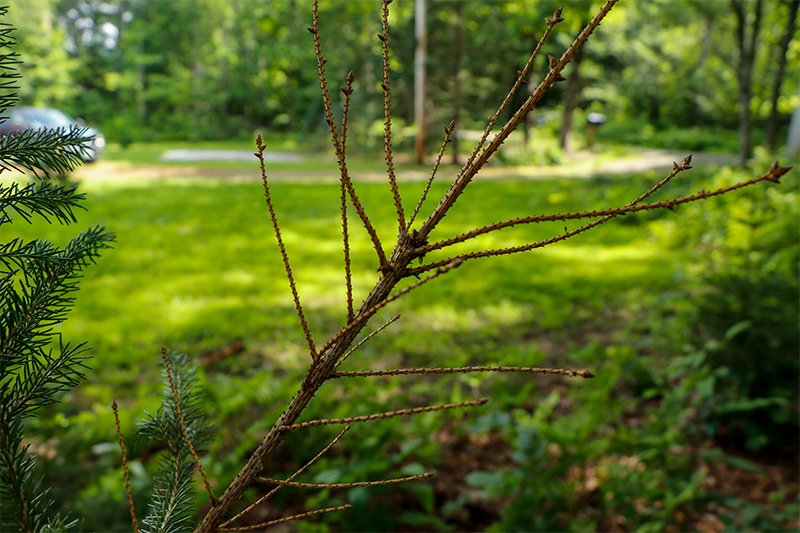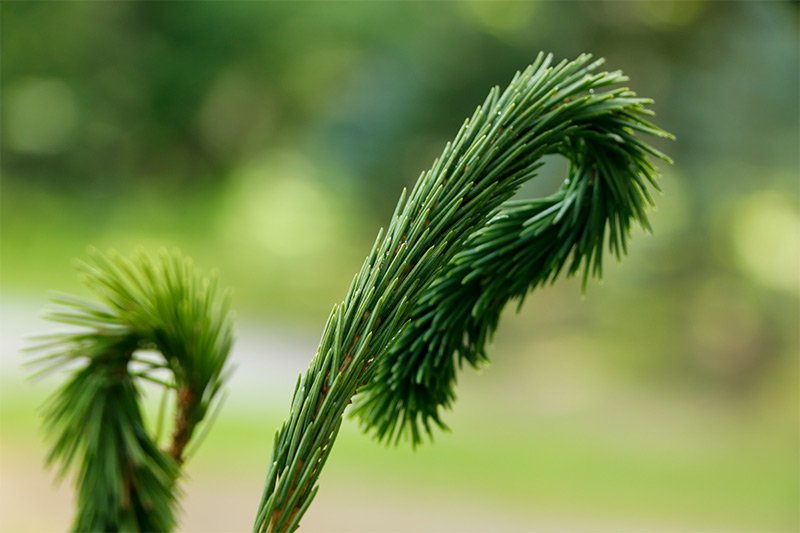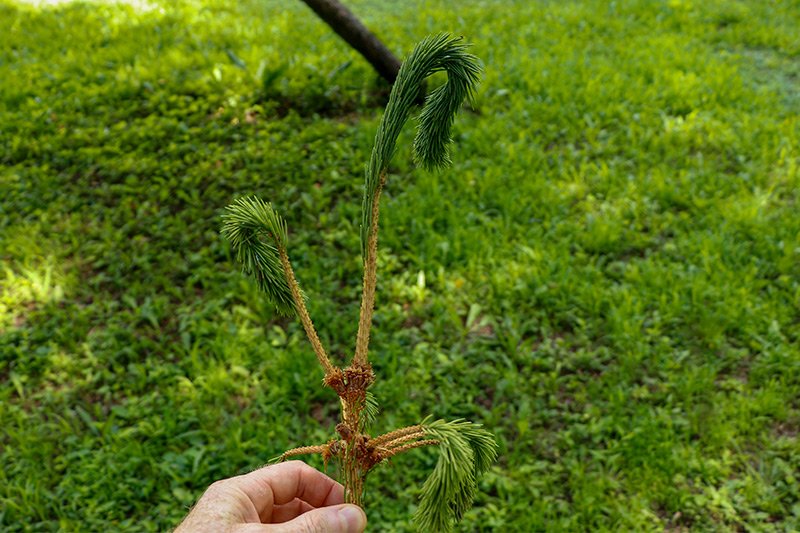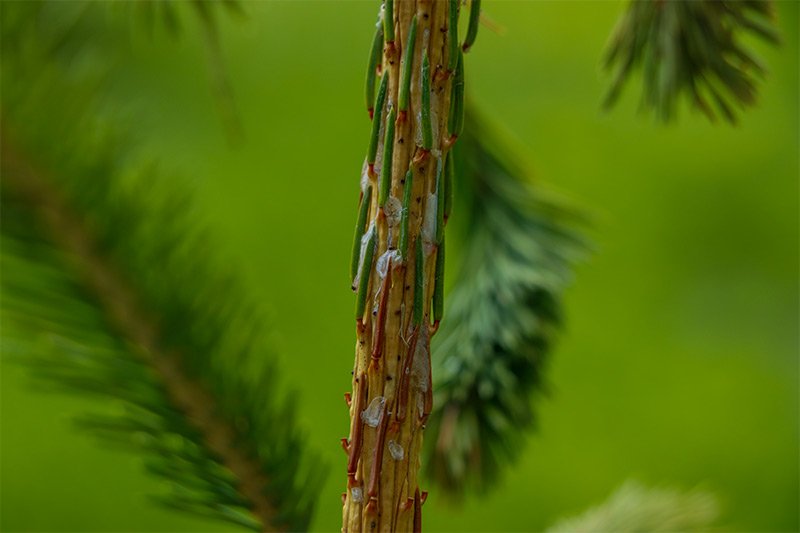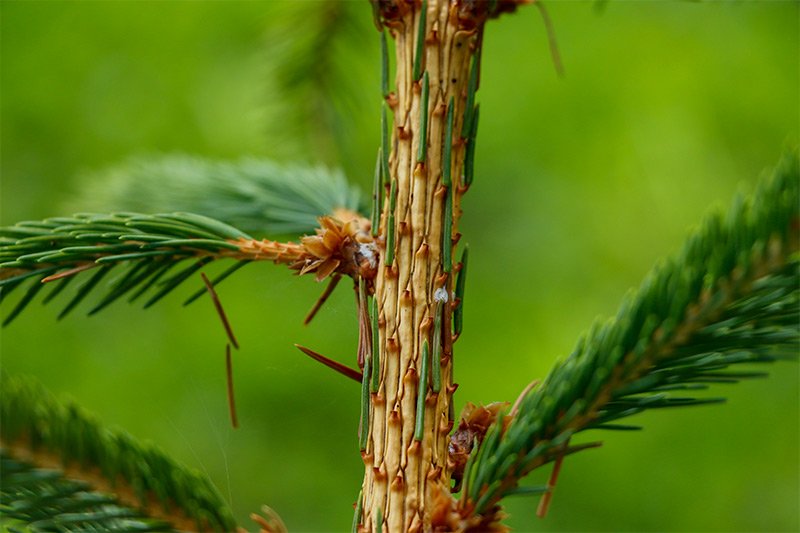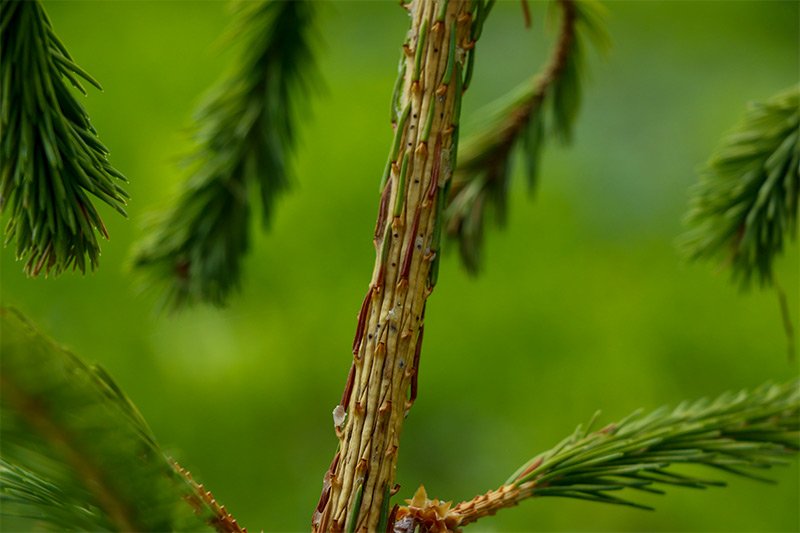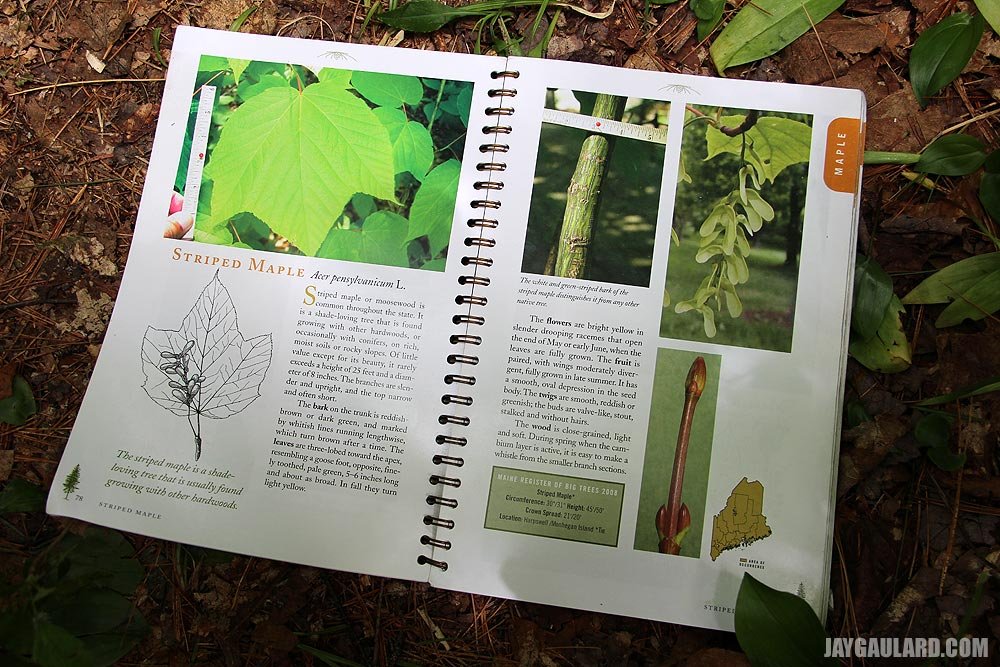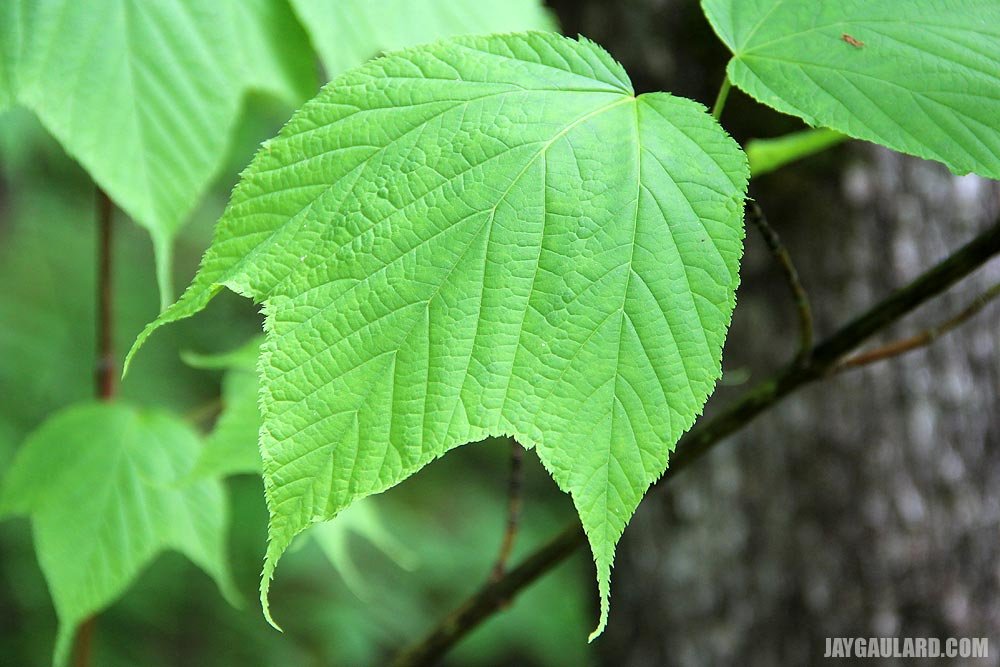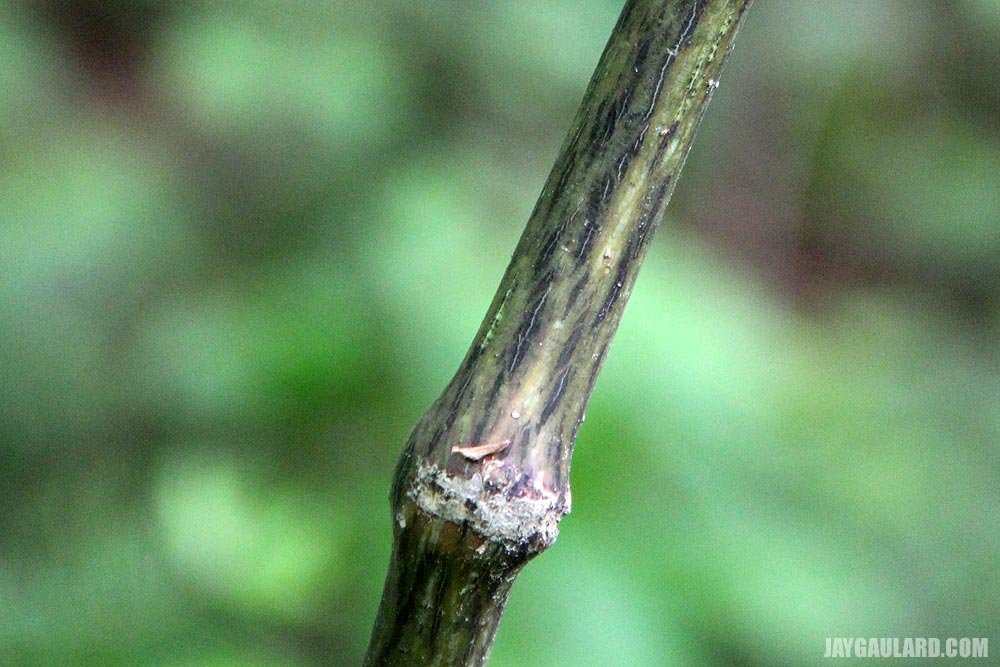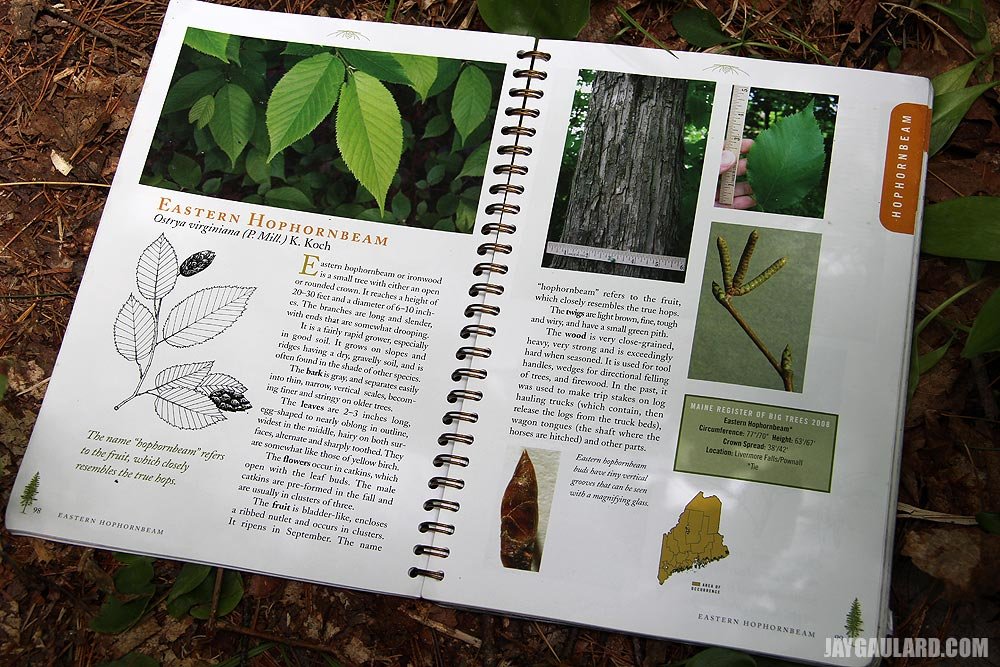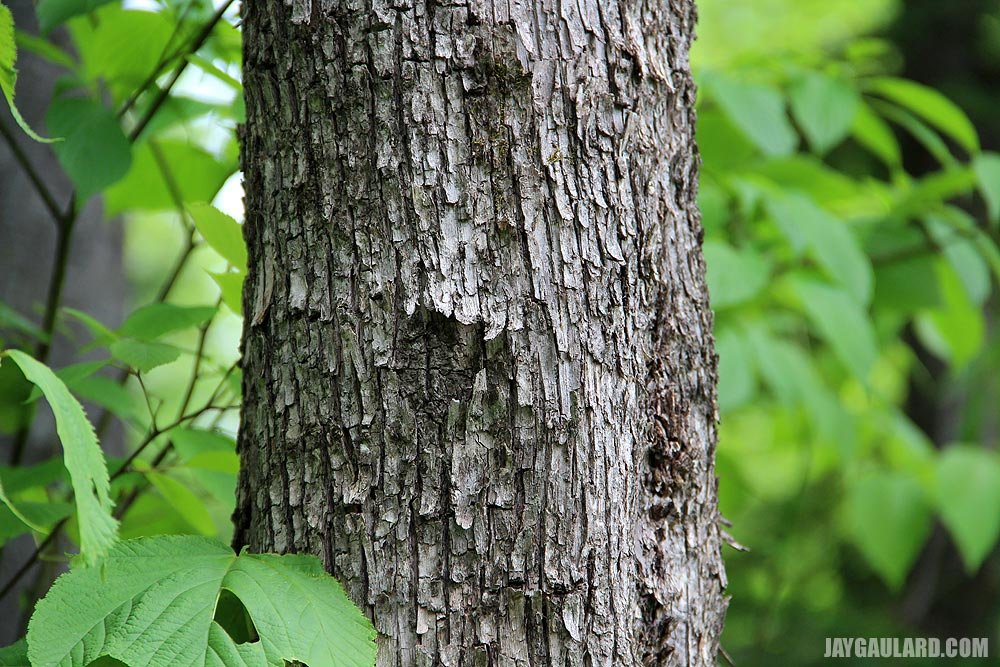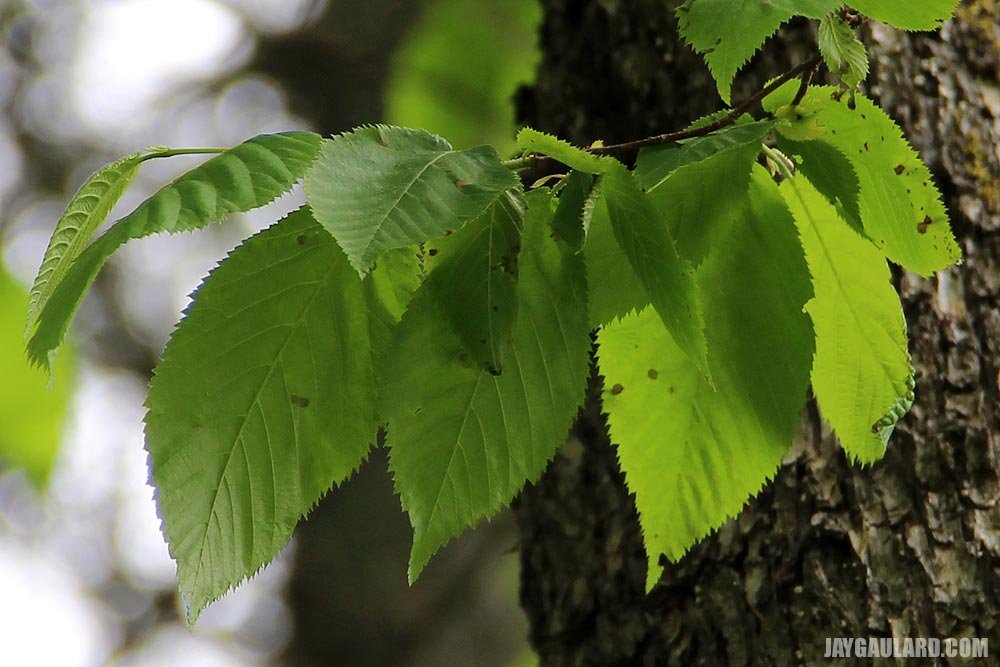Tree Thinning in the Forest
I have a whole bunch of trees outside in my 15 acres of land. They're beautiful, but there are a few areas that are quite messy. Trees down everywhere. I'm not sure it was this bad when we first moved into our house eight years ago, but it sure is bad now. I'm thinking that a few storms did most of the damage. Don't get me wrong - there were a good number of white pines and balsam fir trees that were down on the ground when we got here, but there are many more now. Every time I walk around the woods, I think to myself how nice it would be to clean it all up. Then, I think better of it.
There's a lot to forest management. Apparently, having a woodland that's as clean as a whistle is no good for the wildlife. They like brush piles to hide under and to live in. As far as downed trees, those are excellent for all sorts of animals to live in. Just yesterday, while I was doing some cleanup, I lifted a big rotten log to find a rather plump looking yellow spotted salamander. Her belly was huge, so I think she was/is pregnant. I picked her up and led her to a different rotten log and as soon as I put her on the ground, she burrowed under it. I feel bad even walking around sometimes, knowing how much is living back there.
Trees can become too dense on a piece of land. When that happens, none really grow very well. It's important to manage a piece of property if you've got a lot of trees on it. As for me, I've got tons of eastern white pine, balsam fir, hemlock, red and white spruce, red maple, red oak, green ash, paper (yellow) birch, and a whole lot more. The entire combination can get dense fast, so I do my best to thin out certain areas. Legend has it, the property I now own used to be farmland. We've got a few stone walls, which means someone, at some point, tilled the land to unearth those rocks. They also planted a whole bunch of black cherry trees which outlines the property boundaries. The problem with those cherry trees is that many of them are dying. Since a majority of the trees that began growing around them grow to up to 100 feet tall, the poor black cherries become shaded out. They only grow to about 30 or 40 feet tall, so once they're encapsulated by shade, they die off. I love black cherry trees, so seeing this happen breaks my heart. I've been clearing around some of them to avoid having them die altogether, but as for the ones that have already died, I've been cutting them up for firewood. This is what I did yesterday. I went outside with my chainsaw with the intention of cutting a trail to access some firewood that I had previously cut and ended up not only doing that, but also cutting down all the dead cherry trees along that trail.
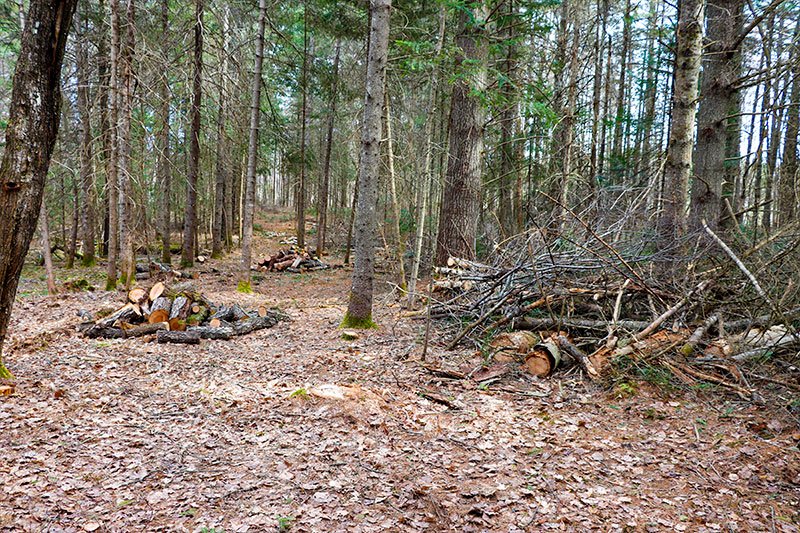
On the plus side, I have a lot more firewood now, but on the minus side, I don't have these trees to admire anymore. Not that they were ever going to come back. Oh well.
As you can see in the above photo, I tried to throw the branches into a pile or piles. I do this because the rabbits and squirrels like it that way. I also cut the larger leaning trees down and try to get them to lie as close to the ground as possible. Like I already alluded to, salamanders live under them. Another benefit is that moss ends up growing all over them, which looks pretty. Being close to the ground also helps them rot away faster, which can take decades as it is.
I don't go back there with the intention of thinning the forest. I go back there with the intention of cutting down dead and leaning trees to use as firewood. While I'm there, I make trails to those firewood piles, which have the effect of thinning things out. I make sure to leave the species of tree I'd like to see grow larger in the future and cut down the ones I'm sick of looking at. We've got far too many eastern white pines; they grow too tall and add too much shade, killing the smaller more shade intolerant trees. This is what happened to the poor cherry trees.
We'll see what happens back there in the coming years. I'm excited to see how it all turns out. It's a constant process, but I feel like the more dead trees I take down, the more I benefit. And the more brush piles and logs I cut up to lie on the ground, the more the wildlife benefits. On top of that, the more I thin, the more the other trees benefit. I like to tell myself I'm doing something positive.
Brush Piles for Wildlife
I've recently been doing tons of work in the forest. I've been cleaning up the many dead and fallen trees we have and I've been throwing all the logs and brush into big piles. In this particular area, I'm not necessarily cutting and stacking to gather firewood or make trails. I'm merely cleaning the forest floor because years of neglect has left it awful looking. My lady and I walk in the woods every morning with our coffee and seeing such a mess is disturbing. And really, when I say mess, I mean
mess. Through the years, the white pine tree have grown very tall, effectively shading out the existing balsam fir trees. Many of those balsam firs have died as a result and have littered the forest floor with their corpses. It's gotten so bad that we haven't been able to even walk through the area. Last week, I told myself enough was enough and I began cleaning up.
Since I didn't want to remove any material from the woods, I decided to stack all the dead wood into piles. As I indicated in my above entry, brush piles make for excellent wildlife habitat. I've been doing some reading on the topic and I've actually become somewhat obsessed. I don't even think I'm cleaning the forest floor anymore. Now, I think I'm merely building brush piles for wildlife. So many creatures live in these piles, from rabbits to weasels to birds. When we feed the birds seed in the morning, we see them take the seeds from our hands and then rush to the interior of the piles to either hide them for storage or to crack them open to eat. It's nice to know I'm having a positive impact.
If you've got land and do a lot of chainsaw work, or even if you don't do work yet, I encourage you to do so. A little cleaning up can give you the logs and branches you need to build a wildlife brush shelter. I happen to live in Maine, so the animals I'm primarily interested in giving habitat to are hares, rabbits, chipmunks, woodchucks, weasels, skunks, red fox, garter snakes, salamanders and others. As far as feeder birds go, I'd like to see some growing populations of towhees, cardinals, cat-birds, sparrows, and junkos. Fly catchers also like brush piles, so I hear.
Just this morning, I snapped a few photos of what I've done so far. As of right now, I have eight quite substantial piles. I'm planning on a few more. I read that a larger number of smaller piles is better than a smaller number of large piles, but since I'll end up having so many piles, this is just the way things are going. I don't think the animals will complain. Please take a look at what I've done so far and let me know your thoughts.
By the way, I'm not using any building strategy with these. I'm cutting and piles. Each piles consists of large and small wood throughout.
